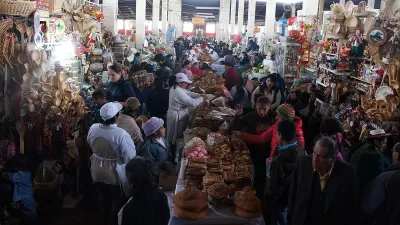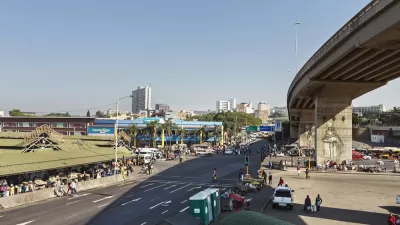Historically, central markets served as grand social and commercial hubs for U.S. cities. A period of 20th century decline interrupted the evolution of markets, but creative and diverse examples have precipitated a recovery around the country.
The Street Plans Collaborative recently released a new report called Mercado: Lessons from 20 Markets Across South America, which picks up on the recent boom in markets around the United States (there has been a “460% increase in the number of known farmers’ markets operating in the county between 1994 and 2008,” according to the report) by exploring 20 markets in five South American countries for lessons about the varieties of markets and their benefits to communities.
Written by Julie Flynn and edited by Mike Lydon, the report launches from the belief that “there are few venues better suited for serendipitous collisions than markets…” In total, the report explores 20 markets in 12 cities located in the countries of Peru, Bolivia, Chile, Argentina, and Uruguay for lessons that contribute to the applications of markets in North America.
The report includes observations about the context of the area surrounding neighborhoods (for example, pedestrian conditions and public space), the structural components of the markets, and the variety of goods sold at the market.
FULL STORY: Mercado: Lessons from 20 Markets Across South America

Maui's Vacation Rental Debate Turns Ugly
Verbal attacks, misinformation campaigns and fistfights plague a high-stakes debate to convert thousands of vacation rentals into long-term housing.

Planetizen Federal Action Tracker
A weekly monitor of how Trump’s orders and actions are impacting planners and planning in America.

Chicago’s Ghost Rails
Just beneath the surface of the modern city lie the remnants of its expansive early 20th-century streetcar system.

Bend, Oregon Zoning Reforms Prioritize Small-Scale Housing
The city altered its zoning code to allow multi-family housing and eliminated parking mandates citywide.

Amtrak Cutting Jobs, Funding to High-Speed Rail
The agency plans to cut 10 percent of its workforce and has confirmed it will not fund new high-speed rail projects.

LA Denies Basic Services to Unhoused Residents
The city has repeatedly failed to respond to requests for trash pickup at encampment sites, and eliminated a program that provided mobile showers and toilets.
Urban Design for Planners 1: Software Tools
This six-course series explores essential urban design concepts using open source software and equips planners with the tools they need to participate fully in the urban design process.
Planning for Universal Design
Learn the tools for implementing Universal Design in planning regulations.
planning NEXT
Appalachian Highlands Housing Partners
Mpact (founded as Rail~Volution)
City of Camden Redevelopment Agency
City of Astoria
City of Portland
City of Laramie





























